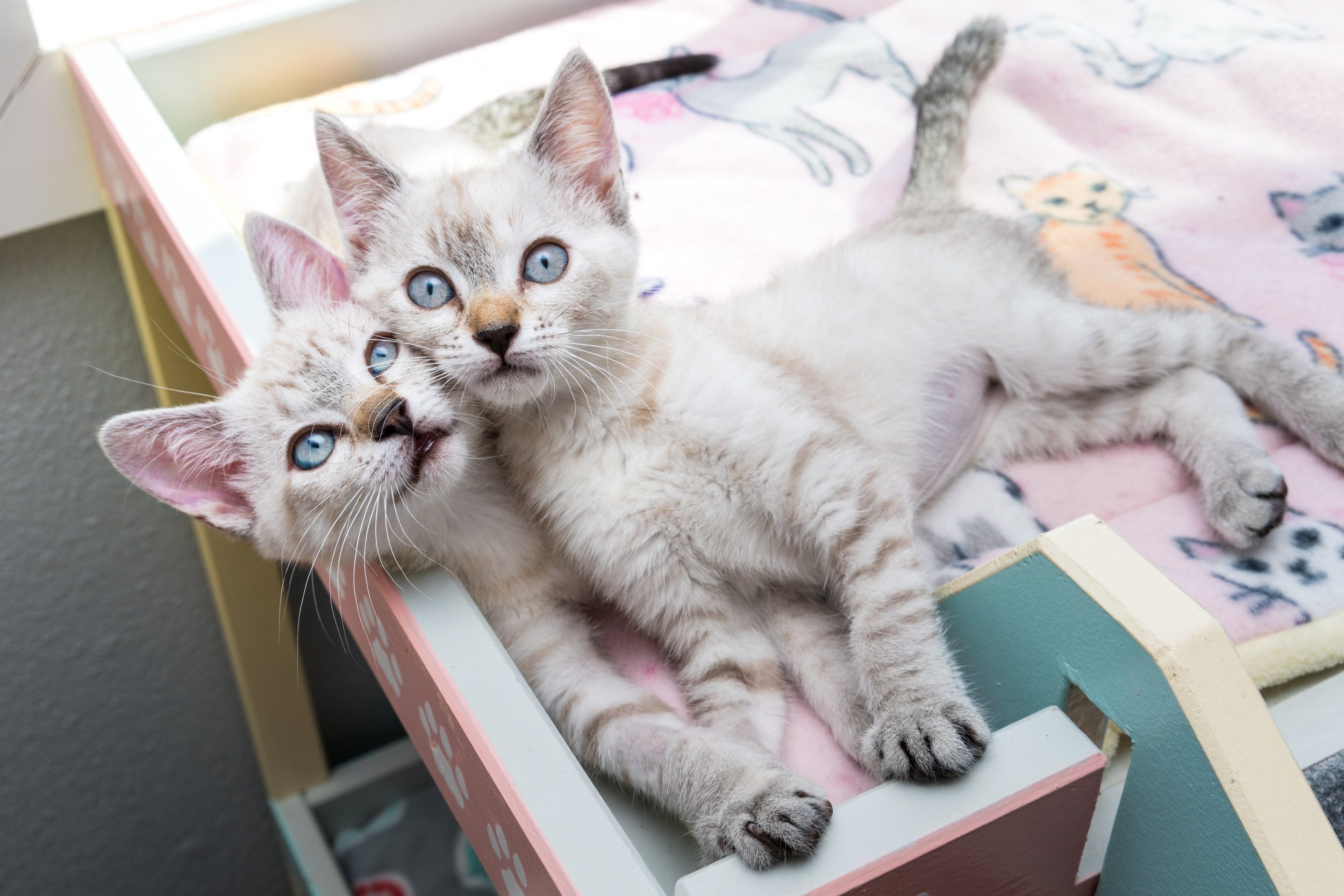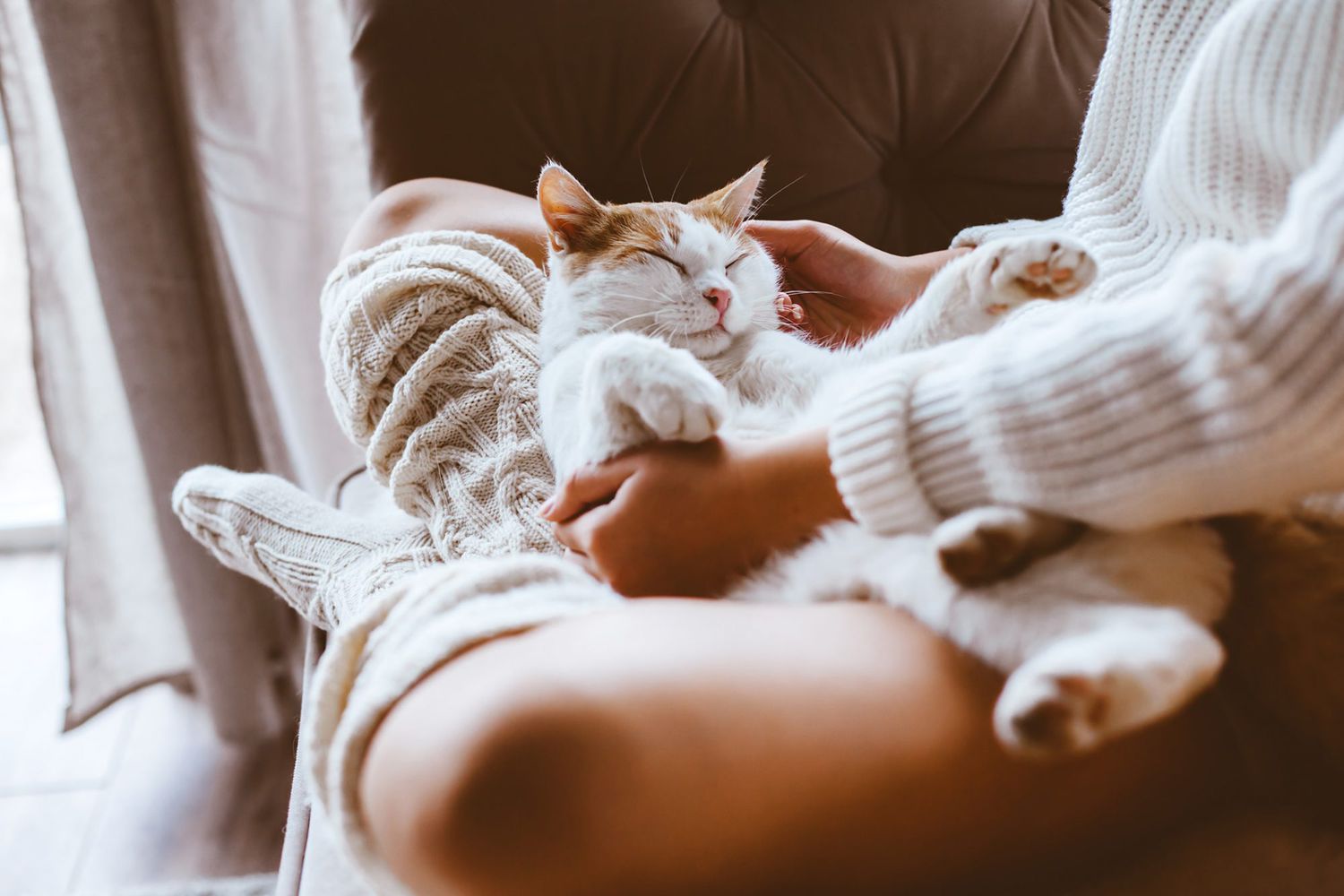Are you curious about why your beloved feline friend sometimes acts a little on edge? Well, get ready to uncover the secret world of stress signals in cats! Understanding the anxiety that our furry companions experience can bring immense benefits to both them and us. By delving into this subject, you'll learn how to create a more peaceful and harmonious environment for your cat, leading to a happier and healthier life for everyone involved. Did you know that studies show that nearly 60% of cats exhibit signs of anxiety? That's a staggering number! So, let's embark on this journey together and discover why your cat might be anxious. Get ready to decode their mysterious behaviors and unlock the secrets to their serenity. It's time to become the ultimate cat whisperer!
Key Takeaways:
- Cats can exhibit a variety of stress signals, such as excessive grooming or hiding.
- Changes in the environment, such as moving or introducing new pets, can trigger anxiety in cats.
- Understanding and recognizing stress signals in cats is important for their overall well-being.
- Providing a safe and comfortable space for cats can help alleviate their anxiety.
- Seeking professional help from a veterinarian or animal behaviorist is recommended if your cat shows persistent signs of anxiety.
Understanding Stress Signals in Cats and Why They Occur
Cats can experience stress just like humans do. When a cat is stressed, it may exhibit certain signals to communicate its discomfort. These signals can include changes in behavior, body language, and vocalizations. For example, a stressed cat may start hiding more often or become more aggressive towards other animals or people. It may also meow excessively or groom itself excessively.
Stress in cats can be caused by various factors such as changes in their environment, lack of socialization, or medical conditions. Understanding these stress signals is important for cat owners so they can provide the necessary support and help their furry friends feel more at ease.
Signs Your Cat May be Anxious or Stressed: What to Look For
As a cat owner, it's essential to be able to recognize signs of anxiety or stress in your feline companion. Some common signs include excessive grooming or licking, loss of appetite, urinating outside the litter box, aggression towards other animals or people, and excessive vocalization.
If you notice any of these signs in your cat, it's important not to ignore them. Cats may not be able to express their emotions verbally like humans do, so it's crucial to pay attention to their behavior and body language as indicators of their mental state. By recognizing these signs early on, you can take steps to alleviate your cat's anxiety and create a more peaceful environment for them.
Common Causes of Anxiety in Cats: What You Need to Know
Cats can experience anxiety due to various reasons. One common cause is changes in their environment. Cats are creatures of habit and prefer stability and routine. Any significant change such as moving to a new home, introduction of new pets or family members, or even rearranging furniture can cause stress and anxiety in cats.
Lack of socialization can also contribute to anxiety in cats. If a cat hasn't been properly exposed to different people, animals, and environments during its early development stages, it may become fearful or anxious in unfamiliar situations. Additionally, medical conditions like urinary tract infections or gastrointestinal issues can also lead to anxiety in cats.
Understanding these common causes of anxiety can help cat owners identify potential triggers and take appropriate measures to reduce their feline friend's stress levels.
How Changes in the Environment Can Trigger Stress in Cats: Examples and Solutions
Cats are sensitive creatures, and even small changes in their environment can trigger stress. For example, moving to a new home can disrupt their sense of familiarity and security. To help your cat adjust to a new environment, make sure to provide them with a safe space where they can retreat and feel secure. This could be a separate room with familiar items such as their bed or toys.
Introducing new pets into the household can also cause stress for cats. When bringing a new pet home, it's important to introduce them gradually and allow your cat time to adjust. Keep them separated initially and gradually increase supervised interactions. Providing plenty of positive reinforcement and treats during these interactions can help create positive associations for your cat.
By understanding how changes in the environment can impact your cat's stress levels, you can proactively address these triggers and provide support to help them cope better.
Distinguishing Stress Signals from Normal Cat Behaviors: What's the Difference?
Cats have certain behaviors that are considered normal, but they may also exhibit similar behaviors when they are stressed. It's important for cat owners to be able to distinguish between the two.
- A normal behavior for a cat is grooming itself. However, excessive grooming can be a sign of stress.
- Another normal behavior is scratching objects to mark territory. But if your cat starts scratching excessively or in unusual places, it could indicate stress.
- Cats may also hide as part of their natural instincts, but if they start hiding more frequently or in unusual places, it could be a sign of stress.
By observing your cat's behaviors and considering the context in which they occur, you can better understand whether they are displaying normal behaviors or exhibiting signs of stress. This awareness will help you provide appropriate support and interventions when needed.
Physical Signs of Stress in Cats: What to Watch Out For
In addition to behavioral changes, cats may also exhibit physical signs when they are stressed. These signs can include changes in appetite, weight loss or gain, digestive issues such as vomiting or diarrhea, increased heart rate, and dilated pupils.
It's important to note that these physical signs can also be indicative of other medical conditions. If you notice any concerning physical symptoms in your cat, it's recommended to consult with a veterinarian to rule out any underlying health issues.
Being aware of these physical signs can help cat owners identify when their feline friend is experiencing stress and take appropriate measures to address it promptly.
Effective Strategies to Help Reduce Anxiety in Cats: Tips and Tricks
If you have a stressed or anxious cat, there are several strategies you can try to help alleviate their anxiety:
- Create a safe and calm environment for your cat by providing them with hiding spots or elevated perches where they can observe their surroundings.
- Establish a consistent routine for feeding, playtime, and litter box cleaning to provide a sense of stability for your cat.
- Engage in interactive play sessions with your cat using toys that simulate hunting behavior. This can help release pent-up energy and reduce stress.
- Consider using pheromone diffusers or sprays that mimic the natural calming scents produced by cats. These can help create a soothing environment for your feline companion.
Implementing these strategies can help create a more relaxed and comfortable environment for your cat, reducing their anxiety levels over time.
The Connection Between Medical Conditions and a Cat's Stress Levels: Explained
Medical conditions can have a significant impact on a cat's stress levels. For example, urinary tract infections or gastrointestinal issues can cause discomfort and pain, leading to increased stress in cats. Similarly, chronic illnesses like kidney disease or arthritis can also contribute to elevated stress levels.
In some cases, stress itself can worsen certain medical conditions. For instance, stress-induced inflammation may exacerbate symptoms of inflammatory bowel disease in cats.
It's important for cat owners to be aware of this connection between medical conditions and stress levels. Regular veterinary check-ups and prompt treatment of any underlying health issues are crucial in managing both the physical and emotional well-being of your feline companion.
Natural Remedies and Calming Techniques for Anxious Cats: What Works Best?
When it comes to calming anxious cats, there are several natural remedies and techniques that cat owners can try:
- Aromatherapy: Certain scents like lavender or chamomile have calming effects on cats. Using essential oils or herbal sprays with these scents in the environment can help promote relaxation.
- Mindful petting: Gentle and slow petting can help soothe a stressed cat. Pay attention to their body language and provide physical contact in areas they enjoy.
- Music therapy: Soft classical music or specially designed calming music for cats can create a soothing atmosphere and reduce anxiety.
- Environmental enrichment: Providing stimulating toys, scratching posts, and interactive feeding puzzles can help keep your cat mentally engaged and alleviate stress.
It's important to note that not all remedies or techniques may work for every cat. It may require some trial and error to find what works best for your individual feline friend. Consulting with a veterinarian or animal behaviorist can also provide valuable guidance in selecting the most effective calming techniques.
In conclusion, it's important to pay attention to the stress signals from your cat as it could indicate anxiety. By understanding and addressing these signals, we can help our feline friends feel more calm and comfortable in their environment.
What triggers anxiety in cats?
Anxiety can be triggered by various factors, such as changes in the cat's surroundings (moving to a new home, changes in furniture or litter, the addition of a new family member or pet, or even the presence of a new pet nearby), traumatic experiences, or physical illness and pain.
How do cats show signs of stress?
Owners may not realize there is an issue with their cats until they have already been experiencing stress for a while. Cats may show signs such as loss of appetite, occasional vomiting, or unusual behaviors like spraying urine indoors or displaying aggression.
Is My cat stressed or anxious?
When a cat is experiencing anxiety, it can lead to physical reactions and changes in their behavior. Some physical reactions may include a faster heart rate, increased breathing, panting, shaking, and drooling. The most noticeable changes in behavior are increased activity, hiding, destructive behavior, and excessive meowing.
How do you relax an anxious cat?
Engaging in regular playtime with your cat helps them become comfortable in new surroundings and encourages socialization. Cats often respond positively when they associate play and treats with a new environment. Toys that offer food rewards can be particularly beneficial in soothing and calming your cat. Consider purchasing enrichment toys such as a scratching post or snuffle mat for your cat.
What are 4 signs your cat is suffering?
Signs that a cat is in pain include a decreased interest in activities such as playing and socializing, as well as a tendency to withdraw and hide. They may also appear to be limping and exhibit increased sensitivity to touch in certain areas of their body. Additionally, their movement and activity levels may be reduced.
What calms a cat down?
Catnip and other pleasant smells can help decrease a cat's anxiety. You can provide catnip toys or sprinkle catnip in areas where your cat likes to relax. Another effective strategy is to hide treats, as this engages your cat's sense of smell. However, it's important to avoid using the relaxing area only when your cat is stressed, as they may start associating it with their triggers.

















